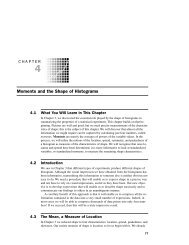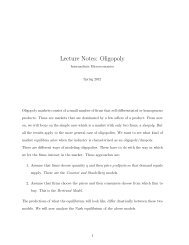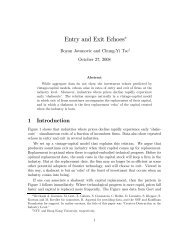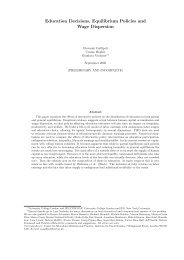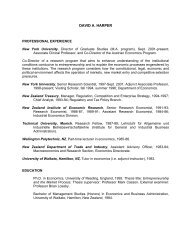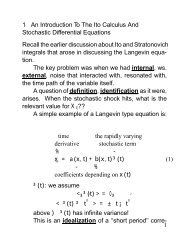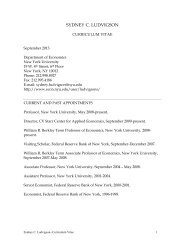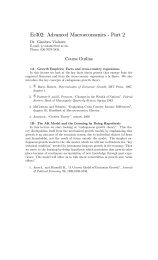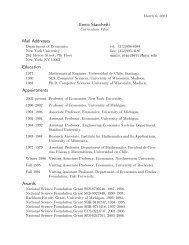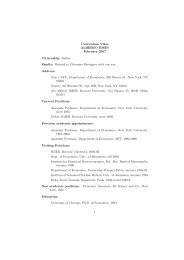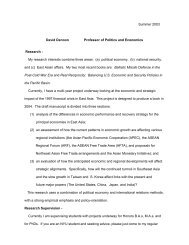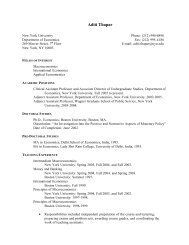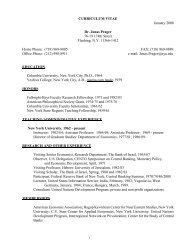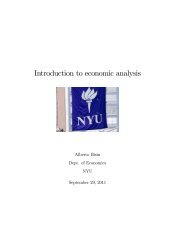Problem Set 3, Microeconomics 2.
Problem Set 3, Microeconomics 2.
Problem Set 3, Microeconomics 2.
You also want an ePaper? Increase the reach of your titles
YUMPU automatically turns print PDFs into web optimized ePapers that Google loves.
(iii) Assume now that there is an additional outcome that we call h (for<br />
high success). The probability of outcome h given e is e 2 . The incentive<br />
scheme is now made up of three elements: w h ,w s ,w f and the utility of the<br />
agent is given by U (e, w) =w h e 2 +w s e+w f (1 − e − e 2 )−c (e). Assume that<br />
c 000 (e) ≥ 0 (yes, the third derivative) for every e ∈ [0, 1]. Suppose that the<br />
principal wants to implement effort e ∗ and characterize the optimal incentive<br />
scheme. Note: make sure that you check second order conditions. You may<br />
want to start by looking at the quadratic case first (c (e) = c 2 e2 ).<br />
(iv) (Only if you are curious. Still the case of three outcomes.) Assume<br />
that c(e) =e 3 2 . This means that, although c is convex, c 000 (e) < 0. Characterize<br />
the optimal incentive scheme for implementing e ∗ (nothing more,<br />
nothing less).<br />
<strong>Problem</strong> 4<br />
Consider the following principal-agent problem. The observable outcome<br />
is the profit π of the principal. The agent chooses effort e ∈ [0, ∞). Effort<br />
is not observable by the principal. Assume that the density of profits<br />
conditional on effort (f (π|e)) is uniform on [e, e +1]. The agent’s payoff<br />
is U (w, e) =v (w) − c (e) where v is strictly increasing, strictly concave,<br />
and unbounded below, and c is convex. The principal is risk neutral and<br />
maximizes expected profits minus the expected wage bill. Assume that the<br />
agent’s reservation utility is zero.<br />
(i) Assume that the principal wants to implement effort e ∗ > 0 and characterize<br />
the optimal incentive scheme. Obtain an exact expression for the<br />
expected wage bill required to implement e ∗ in the optimal incentive scheme.<br />
Hint 1: pointwise maximization may not be the best approach. Hint 2: you<br />
have to use the fact that some outcomes are impossible for some efforts.<br />
(ii) Assume now that v (w) = log(w) and c (e) = e2 and obtain the<br />
10<br />
optimal effortchoicefortheprincipal.<br />
2



